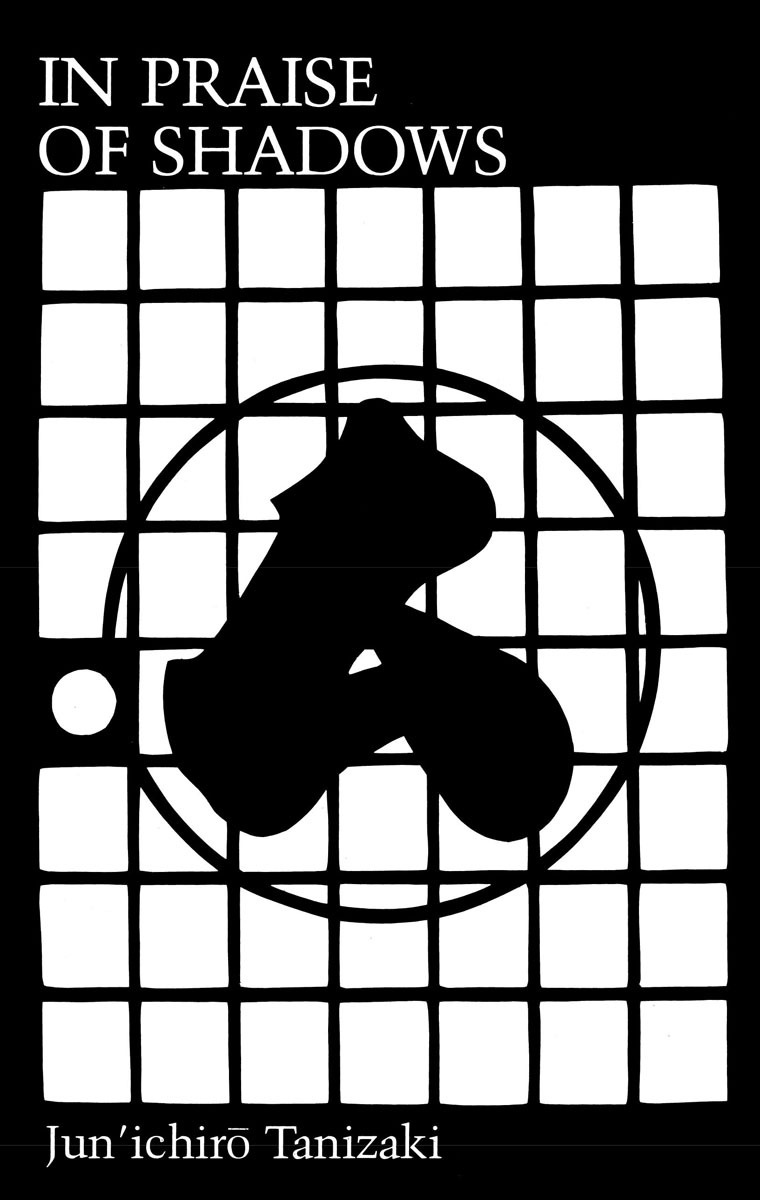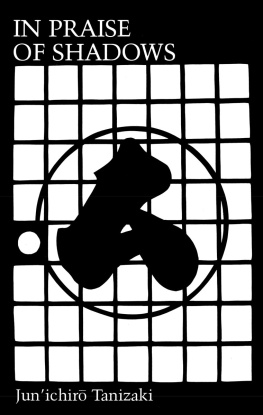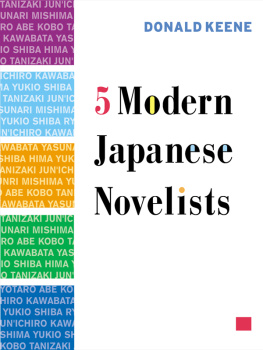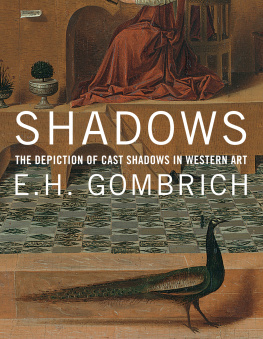Junichirō Tanizaki - In Praise of Shadows
Here you can read online Junichirō Tanizaki - In Praise of Shadows full text of the book (entire story) in english for free. Download pdf and epub, get meaning, cover and reviews about this ebook. genre: Detective and thriller. Description of the work, (preface) as well as reviews are available. Best literature library LitArk.com created for fans of good reading and offers a wide selection of genres:
Romance novel
Science fiction
Adventure
Detective
Science
History
Home and family
Prose
Art
Politics
Computer
Non-fiction
Religion
Business
Children
Humor
Choose a favorite category and find really read worthwhile books. Enjoy immersion in the world of imagination, feel the emotions of the characters or learn something new for yourself, make an fascinating discovery.
- Book:In Praise of Shadows
- Author:
- Genre:
- Rating:3 / 5
- Favourites:Add to favourites
- Your mark:
- 60
- 1
- 2
- 3
- 4
- 5
In Praise of Shadows: summary, description and annotation
We offer to read an annotation, description, summary or preface (depends on what the author of the book "In Praise of Shadows" wrote himself). If you haven't found the necessary information about the book — write in the comments, we will try to find it.
In Praise of Shadows — read online for free the complete book (whole text) full work
Below is the text of the book, divided by pages. System saving the place of the last page read, allows you to conveniently read the book "In Praise of Shadows" online for free, without having to search again every time where you left off. Put a bookmark, and you can go to the page where you finished reading at any time.
Font size:
Interval:
Bookmark:


English translation, Foreword, and Afterword copyright 1977
by Leetes Island Books, Inc.
Eleventh printing
Library of Congress Catalogue Number 77-75035
ISBN 978-0-918172-02-0
Published by Leetes Island Books, Inc. Box 1
Sedgwick, ME 04676
Manufactured in the United States of America
Design by Susan McCrillis Kelsey
This essay has been made available to Leetes Island Books with the gracious permission of Mrs. Jun ichir Tanizaki.
Cover photo: Entrance to the Koizumi House in Hiroshima City, in The Essential Japanese House, photographs by Yukio Futagawa, text by Teiji Itoh, published by Harper & Row, 1967.
This translation has received an award from the Translation Center at Columbia University, made possible by a grant from the National Endowments for the Arts.
One of the basic human requirements is the need to dwell, and one of the central human acts is the act of inhabiting, of connecting ourselves, however temporarily, with a place on the planet which belongs to us, and to which we belong. This is not, especially in the tumultuous present, an easy act (as is attested by the uninhabited and uninhabitable no-places in cities everywhere), and it requires help: we need allies in inhabitation.
Fortunately, we have at hand many allies, if only we call on them; other upright objects, from towers to chimneys to columns, stand in for us in sympathetic imitation of our own upright stance. Flowers and gardens serve as testimonials to our own care, and breezes loosely captured can connect us with the very edge of the infinite. But in the West our most powerful ally is light. The sun never knew how wonderful it was, the architect Louis Kahn said, until it fell on the wall of a building, And for us the act of inhabitation is mostly performed in cahoots with the sun, our staunchest ally, bathing our world or flickering through it, helping give it light.
It comes with the thrill of a slap for us then to hear praise of shadows and darkness; so it is when there comes to us the excitement of realizing that musicians everywhere make their sounds to capture silence or that architects develop complex shapes just to envelop empty space. Thus darkness illuminates for us a culture very different from our own; but at the same time it helps us to look deep into ourselves to our own inhabitation of our world, as it describes with spine-tingling insights the traditional Japanese inhabitation of theirs. It could change our lives.
Charles Moore
School of Architecture, UCLA

W hat incredible pains the fancier of traditional architecture must take when he sets out to build a house in pure Japanese style, striving somehow to make electric wires, gas pipes, and water lines harmonize with the austerity of Japanese roomseven someone who has never built a house for himself must sense this when he visits a teahouse, a restaurant, or an inn. For the solitary eccentric it is another matter, he can ignore the blessings of scientific civilization and retreat to some forsaken comer of the countryside; but a man who has a family and lives in the city cannot turn his back on the necessities of modern lifeheating, electric lights, sanitary facilitiesmerely for the sake of doing things the Japanese way. The purist may rack his brain over the placement of a single telephone, hiding it behind the staircase or in a corner of the hallway, wherever he thinks it will least offend the eye. He may bury the wires rather than hang them in the garden, hide the switches in a closet or cupboard, run the cords behind a folding screen. Yet for all his ingenuity, his efforts often impress us as nervous, fussy, excessively contrived. For so accustomed are we to electric lights that the sight of a naked bulb beneath an ordinary milk glass shade seems simpler and more natural than any gratuitous attempt to hide it. Seen at dusk as one gazes out upon the countryside from the window of a train, the lonely light of a bulb under an old-fashioned shade, shining dimly from behind the white paper shoji of a thatch-roofed farmhouse, can seem positively elegant.
But the snarl and the bulk of an electric fan remain a bit out of place in a Japanese room. The ordinary householder, if he dislikes electric fans, can simply do without them. But if the family business involves the entertainment of customers in summertime, the gentleman of the house cannot afford to indulge his own tastes at the expense of others. A friend of mine, the proprietor of a Chinese restaurant called the Kairakuen, is a thoroughgoing purist in matters architectural. He deplores electric fans and long refused to have them in his restaurant, but the complaints from customers with which he was faced every summer ultimately forced him to give in.
I myself have had similar experiences. A few years ago I spent a great deal more money than I could afford to build a house. I fussed over every last fitting and fixture, and in every case encountered difficulty. There was the shoji: for aesthetic reasons I did not want to use glass, and yet paper alone would have posed problems of illumination and security. Much against my will, I decided to cover the inside with paper and the outside with glass. This required a double frame, thus raising the cost. Yet having gone to all this trouble, the effect was far from pleasing. The outside remained no more than a glass door; while within, the mellow softness of the paper was destroyed by the glass that lay behind it. At that point I was sorry I had not just settled for glass to begin with. Yet laugh though we may when the house is someone elses, we ourselves accept defeat only after having a try at such schemes.
Then there was the problem of lighting. In recent years several fixtures designed for Japanese houses have come on the market, fixtures patterned after old floor lamps, ceiling lights, candle stands, and the like. But I simply do not care for them, and instead searched in curio shops for old lamps, which I fitted with electric light bulbs.
What most taxed my ingenuity was the heating system. N stove worthy of the name will ever look right in a Japanese room. Gas stoves burn with a terrific roar, and unless provided with a chimney, quickly bring headaches. Electric stoves, though at least free from these defects, are every bit as ugly as the rest. One solution would be to outfit the cupboards with heaters of the sort used in streetcars. Yet without the red glow of the coals, the whole mood of winter is lost and with it the pleasure of family gatherings round the fire. The best plan I could devise was to build a large sunken hearth, as in an old farmhouse. In this I installed an electric brazier, which worked well both for boiling tea water and for heating the room. Expensive it was, but at least so far as looks were concerned I counted it one of my successes.
Having done passably well with the heating system, I was then faced with the problem of bath and toilet. My Kairakuen friend could not bear to tile the tub and bathing area, and so built his guest bath entirely of wood. Tile, of course, is infinitely more practical and economical. But when ceiling, pillars, and paneling are of fine Japanese stock, the beauty of the room is utterly destroyed when the rest is done in sparkling tile. The effect may not seem so very displeasing while everything is still new, but as the years pass, and the beauty of the grain begins to emerge on the planks and pillars, that glittering expanse of white tile comes to seem as incongruous as the proverbial bamboo grafted to wood. Still, in the bath utility can to some extent be sacrificed to good taste. In the toilet somewhat more vexatious problems arise.
Next pageFont size:
Interval:
Bookmark:
Similar books «In Praise of Shadows»
Look at similar books to In Praise of Shadows. We have selected literature similar in name and meaning in the hope of providing readers with more options to find new, interesting, not yet read works.
Discussion, reviews of the book In Praise of Shadows and just readers' own opinions. Leave your comments, write what you think about the work, its meaning or the main characters. Specify what exactly you liked and what you didn't like, and why you think so.













